#native species
Explore tagged Tumblr posts
Text

jewels of opar
traditional ink, digital color. 2024
#artists on tumblr#illustration#nature art#bird art#nature#ink drawing#traditional art#bird#anhinga#pink flowers#floral#botanical#botanist#natural art#plants#native species
5K notes
·
View notes
Text
Okay. So you know how industrial agriculture overuses synthetic fertilizers loaded with nitrogen to make up for the decades of soil degradation that intensive farming practices cause? So not only does a lot of this fertilizer end up as runoff in our waterways every time it rains, but while it's still on land it's messing with the surrounding ecology, particularly plants.
See, nitrogen normally exists primarily in our atmosphere, and most organisms can't absorb atmospheric nitrogen, even though it's a crucial nutrient. However, some soil bacteria are capable of drawing this nitrogen in and converting it to a form of ammonia accessible to plants. These bacteria can be found in little nodules of many plants' roots, and make the nitrogen available to their hosts in return for a nice safe place to live. When these nitrogen-fixing plants shed leaves or other parts, or die entirely, the nitrogen in their tissues is then released into the local ecosystem as they decay.
However, when we started supercharging farmland and gardens with tons of extra nitrogen through fertilizers, we threw off the entire nitrogen cycle. Plants native to a given ecosystem have evolved to tolerate a certain balance of nutrients, to include some that may be naturally scarce, and when the nutrient balance suddenly shifts significantly, it causes a lot of upset. With more nitrogen filtering through nearby ecosystems, and those downstream, nitrogen-fixing plants are suddenly losing their competitive edge, and are becoming less common in these places. Over time, they can become locally extinct, breaking whatever bonds they had with other species in the ecosystem, which often leads to even more ecological unraveling.
So you see, more fertilizer isn't always the answer. When engaging in habitat restoration efforts in many parts of the United States, it's important to work with the native soil instead of adding a lot of amendments. Those amendments can actually make it easier for invasive weeds to get a roothold because they often come from places with richer soil, or are simply more able to make the most of the excess nutrients to grow faster and out-compete native plants. Adding too much nitrogen, whether intentionally or as a byproduct of agriculture, makes it even tougher for native ecosystems to thrive in disturbed areas adjacent to farms. On the other hand, making sure your restoration site has native nitrogen-fixers and other pioneer plants helps set the stage for long-term success, while making conditions less favorable to nutrient-hungry invasive species.
We already had plenty of reason to curb the overuse of synthetic fertilizers; this study just adds another argument in that regard.
#plants#botany#plantblr#farming#agriculture#sustainability#permaculture#nature#ecology#restoration ecology#habitat restoration#pollution#environment#conservation#native plants#native species#invasive species#ecosystems#science#scicomm#biodiversity
156 notes
·
View notes
Text


Lilium rubellum
286 notes
·
View notes
Text



Arctic skipper (Carterocephalus mandan) Northeastern Pennsylvania, US
#skippers are so cute#I love them#arctic skipper#Carterocephalus mandan#skipper#skipper butterfly#butterfly#lepidoptera#nature#bugs#nature photography#biodiversity#animals#bugblr#inaturalist#arthropods#entomology#insect appreciation#invertebrates#pollinators#cute bugs#macro#macro photography#wildlife#pennsylvania#native species#floof
224 notes
·
View notes
Text
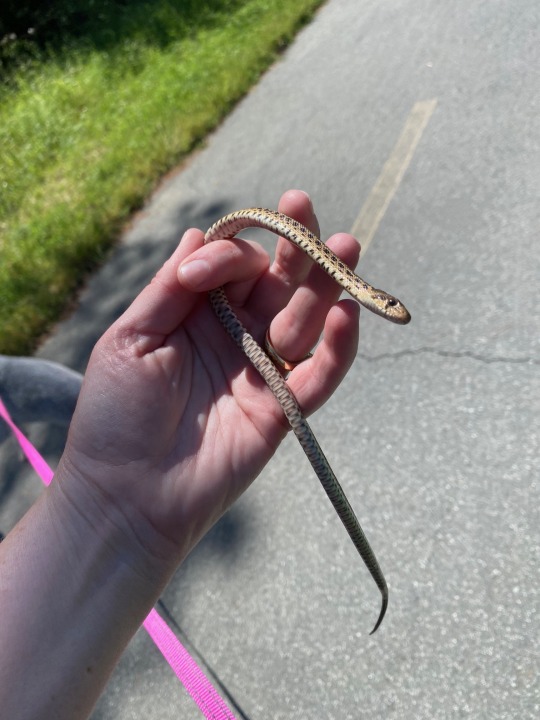

I went for a hike with one of my favorite humans today and found this little darling sunning themselves on a popular trail. I decided to move them off the path as there were a LOT of bikes whizzing by, and they were so polite! No hissing, no musking, no bites!
@snake-spotted I thought you'd appreciate my new friend too!
212 notes
·
View notes
Text
I found the coolest praying mantis here in NC. I’ve only seen the green ones in MI. My daughter told me this is a Carolina Mantis and is native to here. The green ones are an invasive species.

142 notes
·
View notes
Text

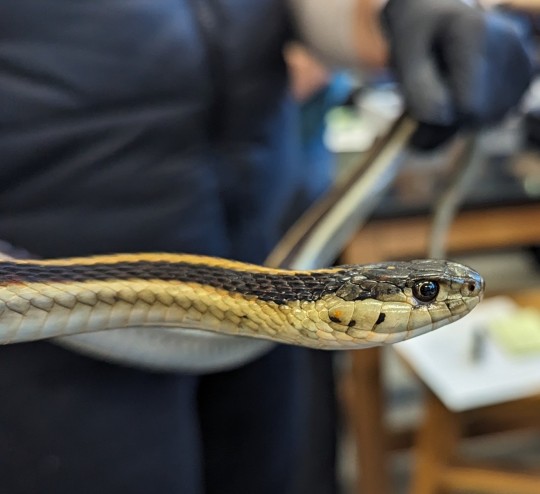

I was so, so lucky to meet a very special trio of snakes for a class I'm taking on methods in field ecology. One of my two professors is a specialist in garter snakes and was kind enough to bring three different species in for us to compare in person and observe up close. The first was the gorgeous common garter snake, Thamnophis sirtalis, pictures above. She was so calm and well-mannered!



Next was this tiny (by comparison) T. elegans dude, a western garter snake, who was wary of the camera but very patient about being passed around by a group of excited college students. He matched my classmate's sweater perfectly!

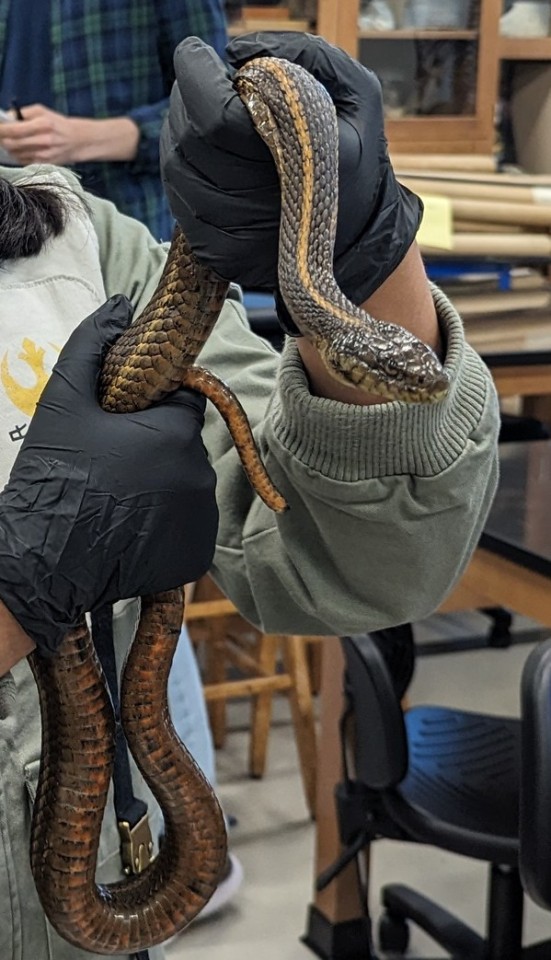

Finally, an endangered and incredibly precious T. gigas, the giant garter snake. She's about half of her maximum adult size, so a giant indeed! She musked and peed a bit but for the most part this gojira-faced beauty was pretty chill. We got to observe a full work-up for her including documenting records and microchipping.
She's one of the last of her species. Despite Herculean efforts by her protectors and conservation experts (mostly just one man and his dedicated team), this is a very difficult species to observe in the wild and their habitats are disappearing faster than their need for prioritization of protection in a given area can be assessed. These snakes rely on riparian habitat near rivers, which is also unfortunately a favorite for human development. At this time we don't know how exactly many giant garter snakes are left or whether their current populations are stable.
Today we got to visit their marshland habitat and watch these three go back to the place where they were caught. It was a huge honor and something I'll carry with me forever.
#snake#snakes#reptile#reptiles#reptiblr#garter snakes#garter snake#native species#we put that thing back where it came from or so help me#so help me!#science#ecology#endangered species#giant garter snake#western garter snake#common garter snake#when i got home i ate a salad so big that it made me sleepy
471 notes
·
View notes
Text
#TwoForTuesday on #TurtleTuesday from the British Museum:

Turtle Figure India, Mughal, Allahabad, c. early 17th c. Nephrite jade; H20 x L48.5 x W32 cm, 41 kg 🆔 “The detailed carving work allows the species to be identified, i.e., a female 'Kachuga dhongoka' [Three-Striped Roofed Turtle, now a critically endangered species] and native to the River Jumna which joins the Ganges at Allahabad.” (BM)

Turtle Netsuke Made by Kikugawa; Japan, Meiji, late 19th c. Silver; W5.4 cm 🆔 Not offically ID’d, but likely the endemic Japanese Pond Turtle (Mauremys japonica), aka nihon ishigame.
#animals in art#19th century art#17th century art#Asian art#South Asian art#East Asian art#Japanese art#Indian art#Mughal art#turtle#turtles#Turtle Tuesday#Two for Tuesday#British Museum#netsuke#figure#sculpture#silver#nephrite#jade#carving#metalwork#native species#endangered species#Japanese Pond Turtle#Three-Striped Roof Turtle#Kikugawa
56 notes
·
View notes
Text

NEED HELP WITH BUTTERFLY ID: A lovely swallowtail butterfly (Eastern Tiger?) resting upon creeping thistle, a non-native plant in North America.

South Frontenac, Eastern ON, Canada | July 14, 2024
#need help with species id please!!#bugs#nature photography#native species#species identification#canon photography#photography#canada#insects#nature#photographers on tumblr#naturecore#butterfly#wildlife photography#original photographers#photooftheday#photo#nature lovers#art
33 notes
·
View notes
Text

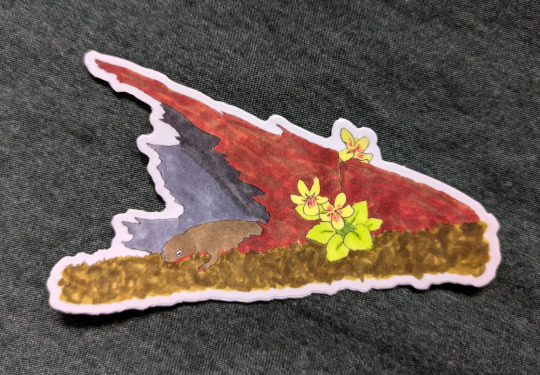
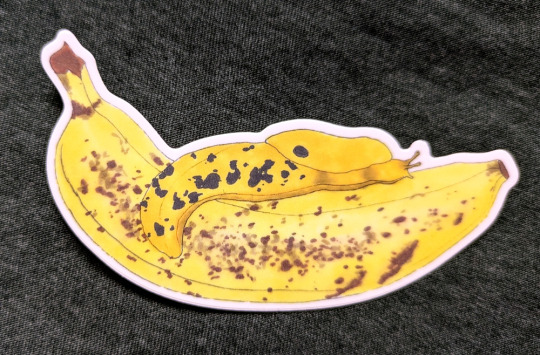




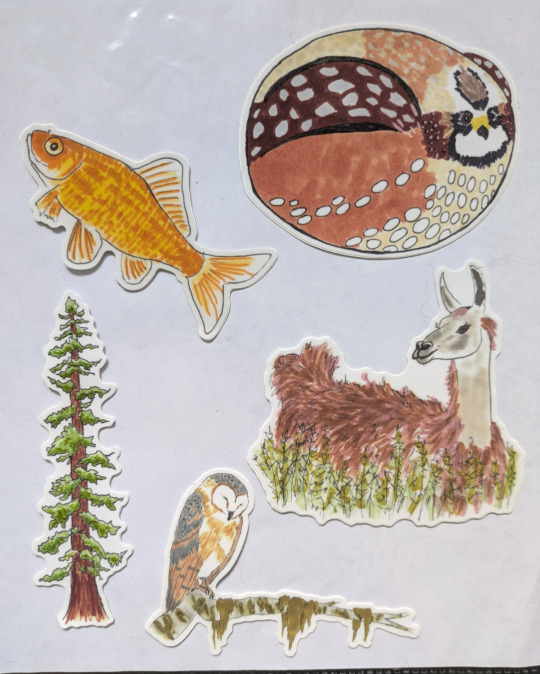
Hey, all! I haven't had a chance to list my three latest stickers--a chum salmon, a banana slug (on a banana!) and a rough-skinned newt in a log. But you can get them directly from me--all my 4" vinyl indoor/outdoor stickers are $5 each plus shipping, and I do ship internationally. Just drop me a line at whishthound(at)gmail(dot)com.
#stickers#wildlife#animals#plants#fungi#nature#nature art#vinyl stickers#bumper stickers#art#native plants#native species#salmon#fish#banana slug#slugs#newt#rough skinned newt#amphibians#herps#salamander#birds#wildflowers#nature aesthetic#naturecore
30 notes
·
View notes
Text
Cry wolf
A couple year ago my son was exploring a cave in a remote area of West Virgina and found, along a railway, some Very Big canine tracks. He was able to get a good clear photo of one, with his hand for scale, and was a little over four inches long without claws. It wouldn't have been impossible for a dog to be in that area, but it was quite far from the nearest houses and also very few dogs have paw that big. We all said "hmmm," and there the matter rested.
Coyote howling is very distinctive, quite high-pitched. I can't get close to the highest notes I hear when the coyotes on the mountain are crying. Twice now, recently, we have heard howling from the mountain that is much lower.
If you look up the range of gray wolves, the closest area would be in upstate New York, which is hundreds of miles from Maryland. However, the Appalachian mountains run in a broad, almost straight band right from here to New England. A critter that was avoiding humans and roads and traveling the wild areas of the mountain ridges would be led right here if it was moving north to south.
In my lifetime black bears, coyotes, porcupines, and fishers have returned to this area after being locally extinct for decades. There are a lot of rumors of mountain lions; although not many of them are credible, a few are. A lone wolf? Deciding to venture south and see the world a little? Is not beyond the bounds of possibility.
We will continue saying, "hmmm." And keep our eyes and ears open.
34 notes
·
View notes
Text


Lampropeltis triangulum
#eastern milksnake#snakes#herps#native species#canada#my photos#ecology#wildlife#species at risk#spring 2023#nature photography
38 notes
·
View notes
Text


I can tell I've been spending too much time working at the computer and not enough time outside because there are almost no new nature photos in my camera roll. I did find this cool Western conifer seed bug (Leptoglossus occidentalis) that was flying around the expo center during setup this morning. Poor lost thing must have come in on one of the plants brought by nurseries . I gently wrapped it up in a paper towel and took it outside to a spot across the street from a wooded area. Good luck, little bug!
#bugs#insects#wildlife#animals#invertebrates#cw bugs#nature#native species#nature photography#Portland#Oregon#PNW
54 notes
·
View notes
Text
damn native bees are so cool i wish ppl cared about them as much as honeybees
#yall afe missing out on bees that are literally green and blue#and there are purple ones and iridescent ones#anyways pls support your native bee species#native bees#honeybee#honey bee#bees#insects#bugs#entomology#native species
27 notes
·
View notes
Text
It would be nice if humanity could reach a point where landscaping like this is not okay. I walk past this area frequently, and they regularly nuke everything with roundup and remove all the detritus. Think of all the arthropods and other wildlife this wasted space could support. I understand having fire buffers around buildings, but this attitude isn’t exclusive to plots close to buildings…

I also understand many native plants can be more difficult to grow, but California poppies (in the Bay Area) are not one of them. I’m sure other regions have similarly easy to grow species. Even a few plants can make a huge difference.
We as a culture need to stop it with the blasé attitude about the destruction of nature, particularly bugs (ie invertebrates). “Kill it with fire” is a shitty and ignorant way to react to a tiny animal that is merely trying to exist. The vast majority of bugs are not out to get you and are, in fact, terrified of you (rightfully so in many cases).
Would you squish a baby bird? Didn’t think so.
#rant#that article yesterday set me off lol#it’s been bothering me for a long time though#ecology#ecological destruction#bugs#don’t squish bugs#sustainable landscaping#plant native#native species#nature#biodiversity#conservation#roundup#stop it
69 notes
·
View notes
